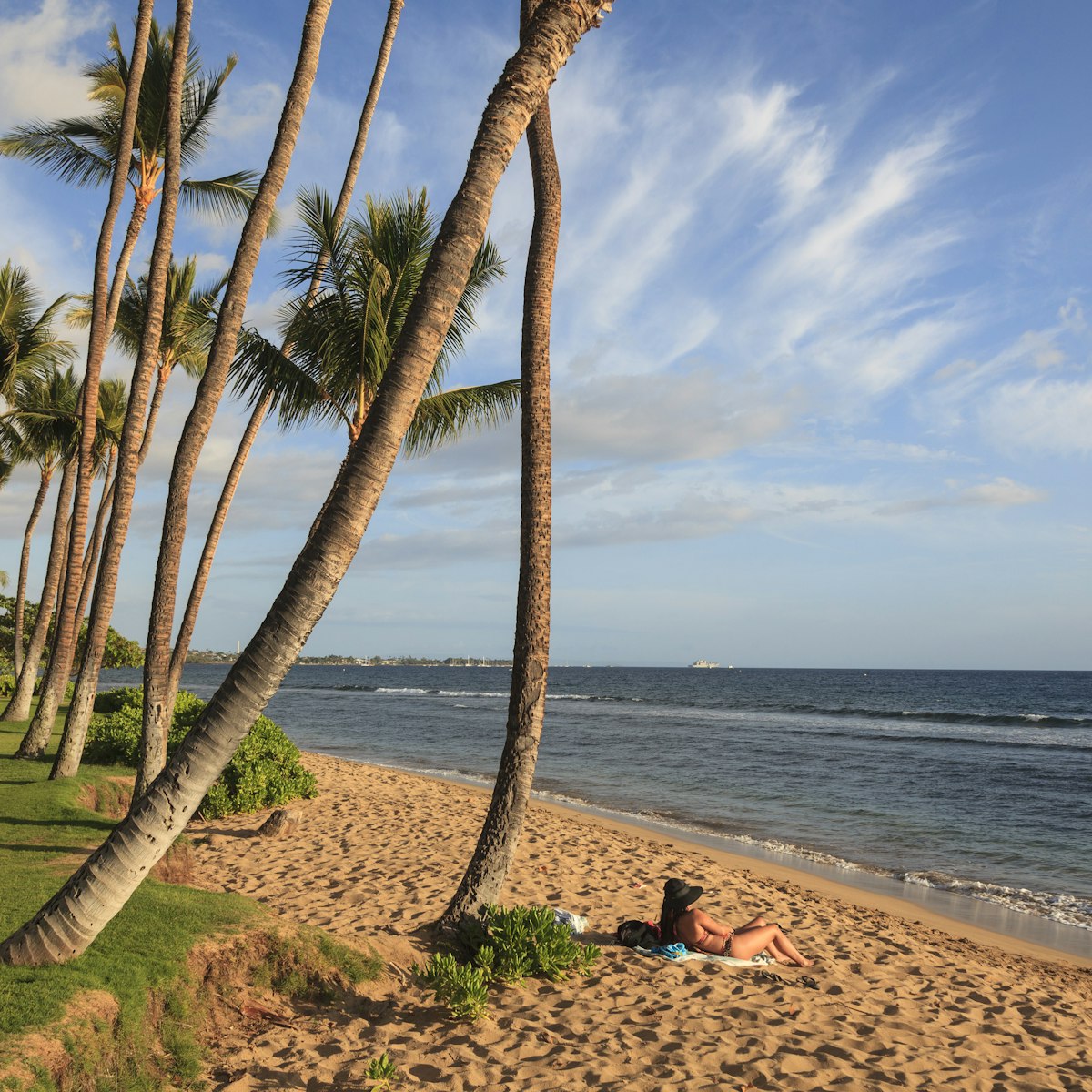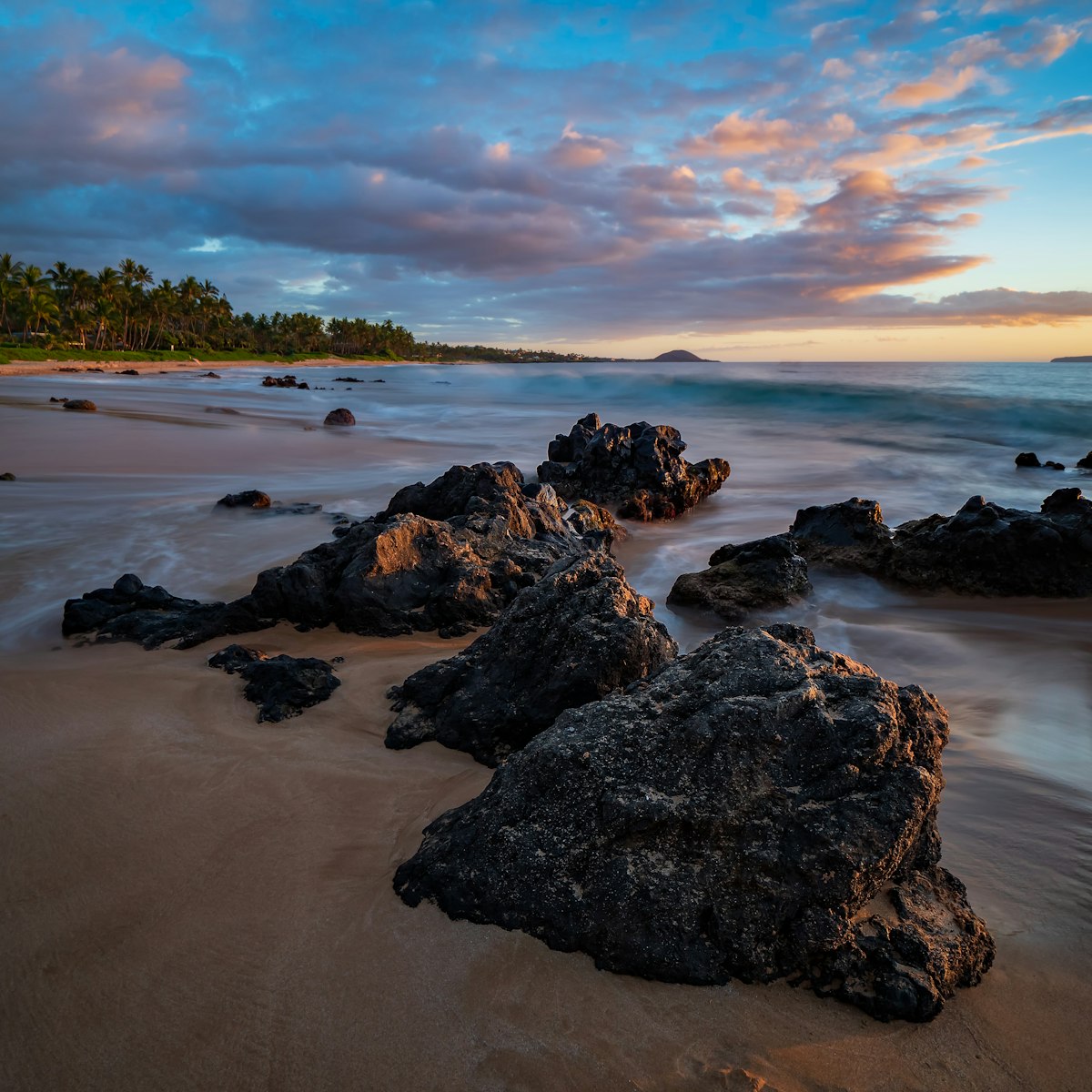Although scientists haven’t been able to pinpoint the exact date, Maui’s last lava flow probably spilled down to the sea here between 1480 and 1600 CE, shaping ʻAhihi Bay and Cape Kinaʻu. Today, the jagged lava coastline and the pristine waters fringing it have been recognized as a unique marine habitat and designated a reserve. Thanks in part to the prohibition on fishing here, the snorkeling is incredible but getting overcrowded. Consider coming for just the scenic drive. Obey all regulations and respect the fragile surroundings.
A few snorkelers head to the little roadside cove 175yd south of the first reserve sign. There is no parking here. Drive 350yd past the cove and look for a large parking lot on the right. A roadside path leads from the lot back to the cove, but note that the cove is not your best option. Instead, stop by the covered pavilion with the interpretive signage, which discusses the coral reefs here, and follow the coastal footpath south from the pavilion for five minutes to a black-sand beach with fantastic coral and clear water. Although this area, known informally as The Dumps, used to attract few visitors, the secret is out. Get here well before 9am to nab a decent parking spot – and maybe some solitude. The area now attracts up to 500 people per day.
To snorkel, enter the water from the left side of the beach, where access is easy and recommended by reserve officials. Look for the 'fish' signpost, which marks the entrance point. Snorkel in a northerly direction and you’ll immediately be over coral gardens teeming with an amazing variety of fish. Huge rainbow parrotfish abound here, and it’s not unusual to see turtles and the occasional reef shark.
A sign at the parking area reminds snorkelers to check their sunscreens before entering the water. Many suntan lotions contain ingredients that are fatal to reefs. Zinc oxide and titanium dioxide are safe.
Large sections of the 1238-acre reserve are closed to visitors, which allows the Department of Land & Natural Resources (www.dlnr.hawaii.gov) to protect the fragile environment from tourist wear and tear, and to develop a long-term protection plan. Visitation in the open areas is permitted between 5:30am and 7:30pm.








